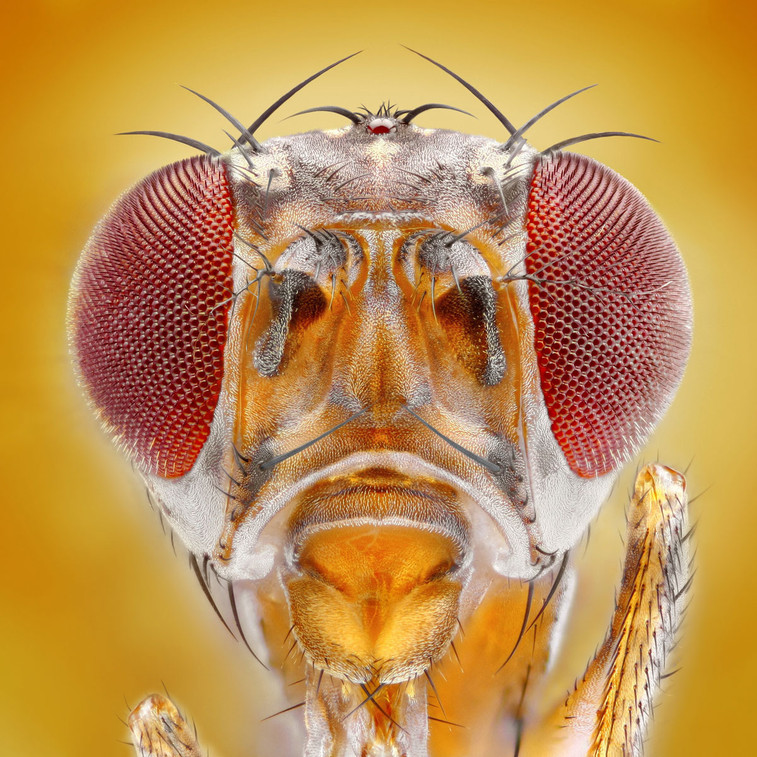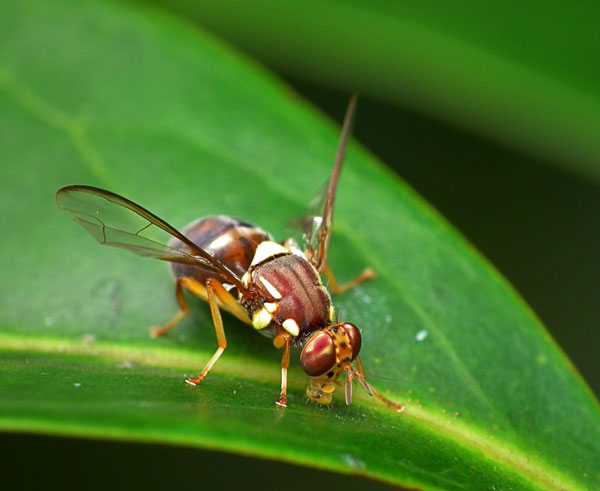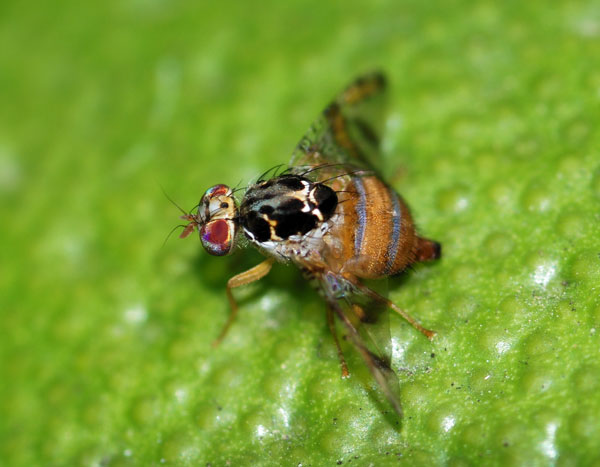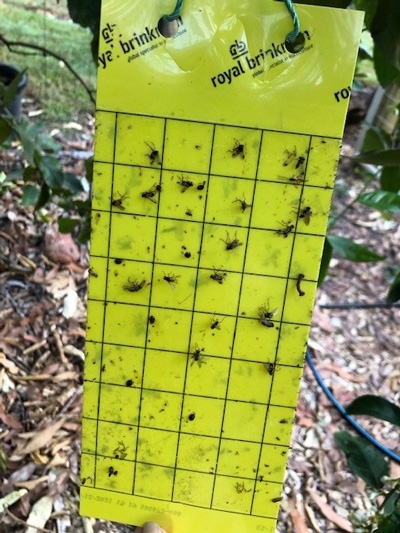
Battling Pests: Fruit Flies
Posted by Dale Parsons on 4th Nov 2025
Fruit flies: those tiny, incessant pests that seem to appear out of nowhere, especially when the weather warms up. If you've ever experienced a fruit fly infestation, you know it's not just a minor inconvenience. These tiny invaders can rapidly multiply, risking your fresh produce and even your health. The seasonal surge of fruit flies creates an urgent need for practical, effective solutions. This blog delves into the ins and outs of tackling fruit fly issues head-on. We've got you covered, from pinpointing the initial problem to implementing preventative and reactive measures. Read on to reclaim your peace of mind—and your fruit bowl!
Why Fruit Flies Are a Problem
When it comes to your garden, fruit flies are far from harmless. These minuscule pests can wreak havoc on your carefully cultivated plants and ruin the fruits of your labour—quite literally. A fruit fly infestation can lead to spoilage and rot, dramatically decreasing your harvest yield. Beyond the tangible loss, they also tarnish the aesthetic appeal of your garden, turning what should be a tranquil space into a breeding ground for pests.
The Lifecycle of a Fruit Fly
Understanding the lifecycle of a fruit fly is crucial for effective control. These insects have a remarkably fast breeding cycle; they can go from egg to adult in just a week under optimal conditions. Females lay up to 500 eggs at a time, often directly on ripe fruit or in decaying organic matter. This rapid reproduction rate explains why a minor issue can escalate into a full-blown infestation in a matter of days. Therefore, early identification and intervention are crucial to maintaining a healthy, thriving garden.
Identifying the Signs of Fruit Fly Infestation
Recognising the early signs of a fruit fly infestation can be the difference between a minor nuisance and a full-scale invasion. Keep an eye out for these tell-tale indicators:

Queensland Fruit Fly (Bactrocera tryoni)
Image Attribution:
James Niland, CC BY 2.0, via Wikimedia Commons
- Tiny Flies: The most obvious sign is the sight of small, flying insects hovering around fruits, vegetables, or compost bins.
- Sticky Spots: You may notice a sticky substance on the surface of fruits resulting from fruit flies laying eggs.
- Fermentation Smell: A sour or fermented odour often emanates from affected produce.
- Maggots: In severe cases, you might even find tiny maggots in fruits that have been left out.
Common Types of Fruit Flies in Australia
Australia is home to several species of fruit flies, but the Queensland Fruit Fly and the Mediterranean Fruit Fly are the most prevalent.
- Queensland Fruit Fly: Identified by its bright red eyes and yellow-brown body, this species is particularly fond of citrus fruits.
- Mediterranean Fruit Fly: This variety has a mottled, brownish-yellow appearance and is generally attracted to stone fruits like cherries and peaches.

Mediterranean Fruit Fly (Ceratitis capitata)
Image Attribution:
Alvesgaspar, CC BY-SA 3.0, via Wikimedia Commons
Distinguishing between these common types can help you choose the most effective treatment and prevention methods tailored to your fruit fly infestation.
Prevention is Better than Cure
It's an age-old adage, but it holds true, especially when tackling fruit flies. Taking preventative steps can save you time and effort and the heartache of seeing your garden's harvest go to waste. Being proactive about fruit fly prevention allows you to maintain the beauty and productivity of your garden without the constant worry of an infestation lurking around the corner.
What’s New for Fruit Fly Control in 2025
Fruit fly pressure now runs longer across much of Australia due to warmer springs and extended autumns. That means starting earlier and keeping simple steps ticking over through the warm months.
- Start monitoring earlier: hang male-lure traps in mid–late spring so you see the first arrivals and can act fast.
- Protein bait through peaks: reapply after rain and weekly in hot spells to cut egg-laying.
- Exclude with fine netting: cover fruit just before it colours and secure the base so flies can’t enter from below.
- Dispose correctly: solarise in a sealed black bag for a few days or freeze for 48 hours before binning — don’t compost fresh infested fruit.
For official home-garden guidance and timing, see Agriculture Victoria’s current advice and host fruit lists.
Garden Maintenance Tips
To make your garden less inviting to these pesky invaders, consider these practical tips:
- Regular Harvesting: Don't let ripe fruits sit on plants too long. Harvest them as soon as they're ready.
- Proper Waste Disposal: Always dispose of fallen or rotting fruits immediately and ensure compost bins are well-sealed.
- Plant Selection: Opt for fruit fly-resistant plant varieties when possible.
- Natural Repellents: Use aromatic herbs like basil or lavender as natural repellents around your garden's perimeter.
Incorporating these simple yet effective measures into your gardening routine can significantly reduce the risk of a fruit fly infestation.
Combatting Fruit Flies: Product Recommendations
While prevention is undeniably the first line of defence, let's face it: sometimes an infestation is unavoidable. The good news is all is not lost. There are tried-and-tested methods to deal with a fruit fly invasion, restoring your garden to its former glory. In the next section, we'll delve into product recommendations that are effective and tailored to the unique challenges posed by the common fruit fly species found in Australia. Stay tuned.
Sticky Traps: Your Early Warning System

Yellow Sticky Trap with Captured Fruit Flies
Sticky traps serve as more than just a means of capturing fruit flies; they're an invaluable tool for early detection. These traps feature a sticky surface that lures in fruit flies, providing you with a clear visual indicator of when the season has started and it's time to commence your anti-fruit fly strategy. The numbers trapped on the sticky surface can give you a real-time snapshot of the fruit fly activity in your garden, allowing you to take timely, effective measures. Far from being just a reactive tool, sticky traps are an essential part of a proactive, multi-pronged approach to managing fruit fly infestations.
Wild May Fruit Fly Attractant: The Organic, Targeted Solution
If you're battling the Queensland Fruit Fly and seeking an environmentally friendly approach, the Wild May Fruit Fly Attractant is your go-to solution. This attractant is specifically formulated to target male Queensland fruit flies, disrupting their breeding cycle effectively. Crafted from native Australian essential oils, it boasts a BFA Allowable Organic Input Status, making it an ideal choice for organic gardeners.
Not only is this attractant pesticide-free, but its non-toxic killing system also ensures that beneficial insects in your garden are left unharmed. For optimum effectiveness, research from Wild May suggests using four traps per hectare (approximately 2.5 acres). The best part? You have the flexibility to create your own traps using plastic drink bottles or other household items, making it both cost-effective and easy to use.
Eco Male Fruit Fly Traps
If you're keen to strike at the heart of the problem, Eco Male Fruit Fly Traps offer a targeted approach. These traps are specifically designed to attract male fruit flies, using a pheromone that mimics the scent of a female. By capturing the males, you effectively disrupt the breeding cycle, reducing the chances of future infestations. It's a smart, efficient way to tackle the issue without resorting to harsh chemicals or complicated setups. Whilst these traps below do contain traces of chemical, they are often still used in organic gardens as the traps do not come in contact with your prized fruit & vegetables. They are placed around the garden and draw the fruit fly away from your crop.
Fruit Fly Netting
For those who prefer a physical barrier, Fruit Fly Netting offers a robust and reusable solution. This fine mesh netting serves as an effective shield, preventing fruit flies from gaining access to your precious produce in the first place. While it may require initial effort to set up, the payoff is long-lasting protection that doesn't involve chemicals or constant monitoring. It's an ideal method for organic gardeners and those seeking to minimise environmental impact.
Malathion Garden Spray
Malathion Garden Spray is a chemical option that delivers quick results for those needing a potent solution. The active ingredient, Malathion, targets the nervous system of fruit flies, effectively killing them on contact. However, due to its chemical nature, it's essential to exercise caution. Always follow the manufacturer's instructions, wear protective gear, and keep pets and children away from treated areas. While effective, this option may be a last resort, especially for those who prefer organic gardening.
DIY Solutions: When You're in a Pinch
Sometimes, you need a quick fix, and fortunately, DIY solutions can offer immediate relief. A simple vinegar trap—made with apple cider vinegar, a drop of dish soap, and a funnel—can effectively capture these pests. Similarly, a mixture of red wine and soap in a shallow dish can lure and trap fruit flies. These home remedies are perfect when you're in a pinch and must act fast.
Fruit flies are more than just a minor annoyance; they threaten your garden's harvest and aesthetics. However, preventative measures and reactive solutions are the key to tackling this issue. From understanding the lifecycle of a fruit fly to adopting garden maintenance practices and choosing the right products, every step counts. Whether you opt for organic attractants, targeted traps, or even DIY fixes, remember that acting early and consistently is crucial to keeping your garden fruit fly-free.
Don't wait for a minor issue to become a full-blown crisis. Take action now to protect your garden from fruit fly infestation. We've recommended products tailored to various needs—from organic attractants to potent chemical sprays. Click the links below to purchase these tried-and-tested solutions and gain the upper hand in your battle against fruit flies.
- Sticky Insect Traps
- Wild May Organic Fruit Fly Attractant
- Eco Male Fruit Fly Traps
- Fruit Fly Netting
- Malathion Garden Spray
By acting now, you're investing in a fruit fly-free garden and the peace of mind that comes with it.
Further Reading...
- More information about fruit fly control from the Australian Department of Agriculture.
- Read about Garden Gurus recommendation for traps here, and view their video below (NB: these traps have an open top so in our summer, the rain might get in and dilute the bait, the better traps have a covered top, IE: 2L juice or milk bottle)
